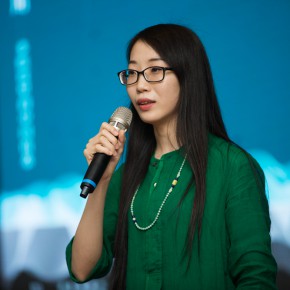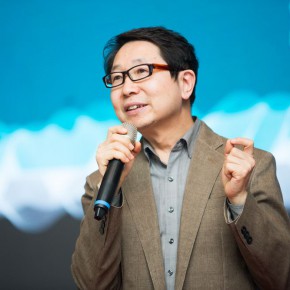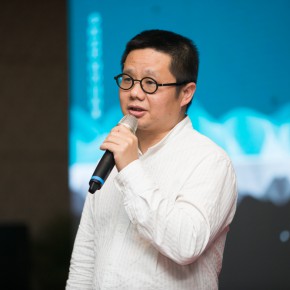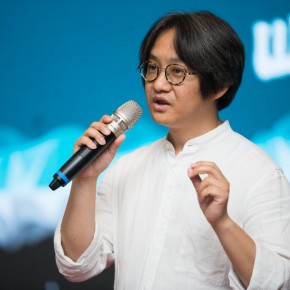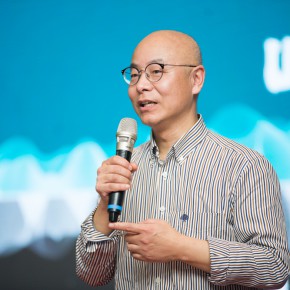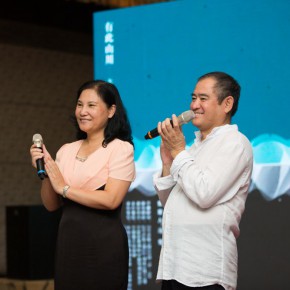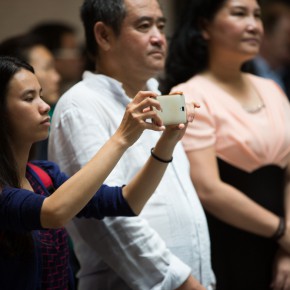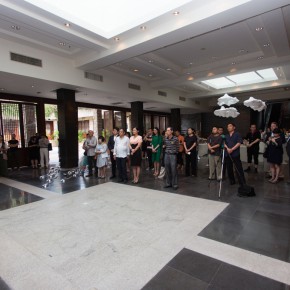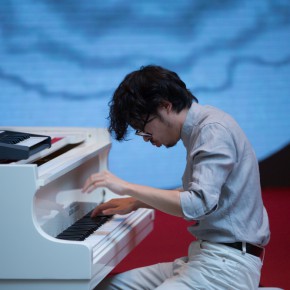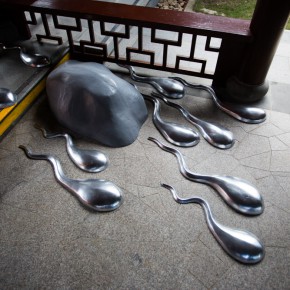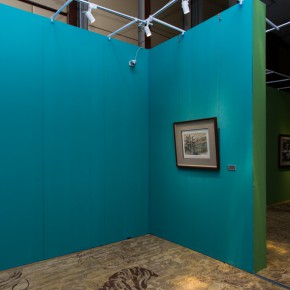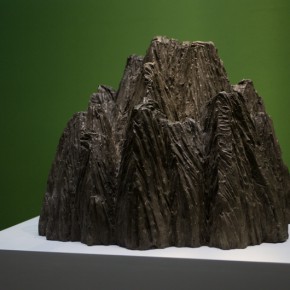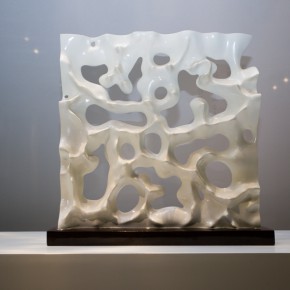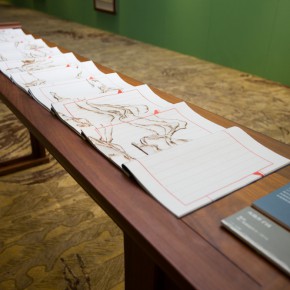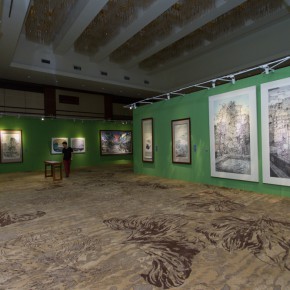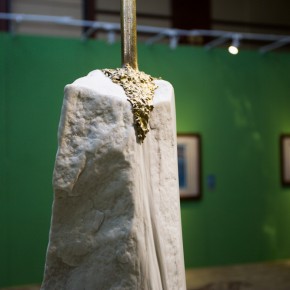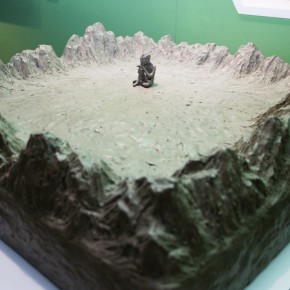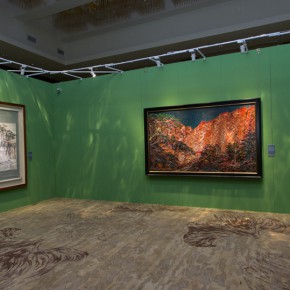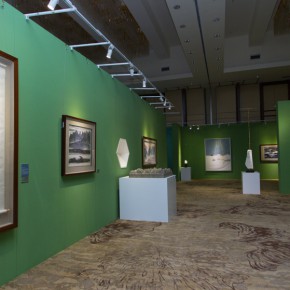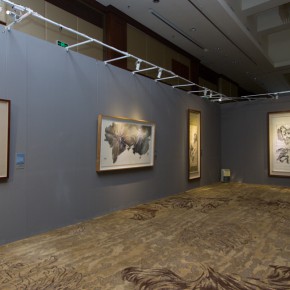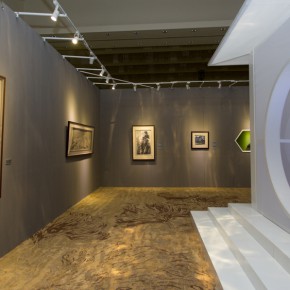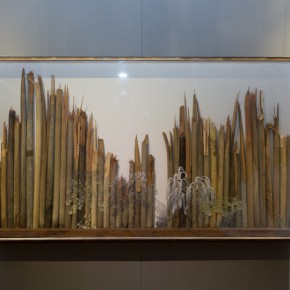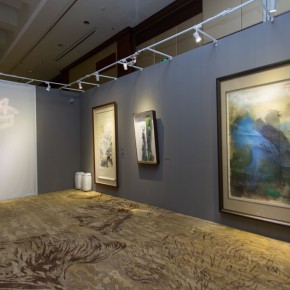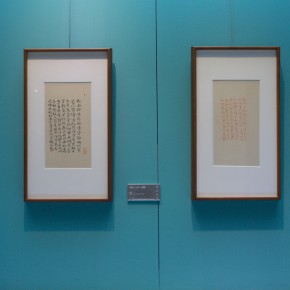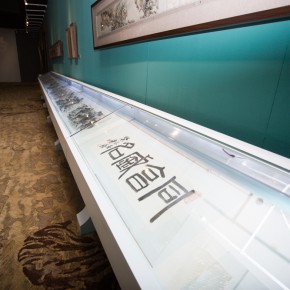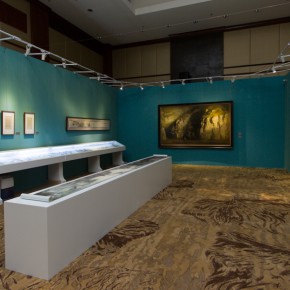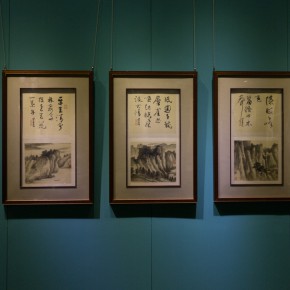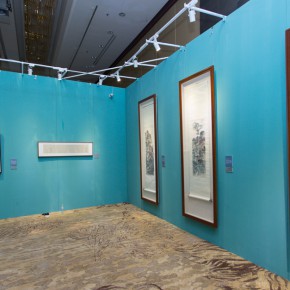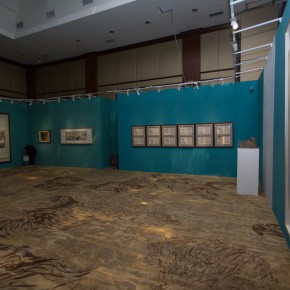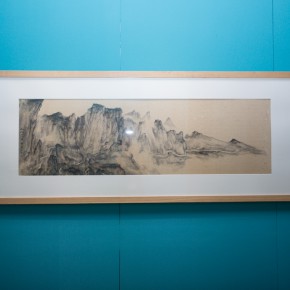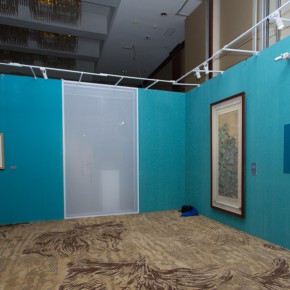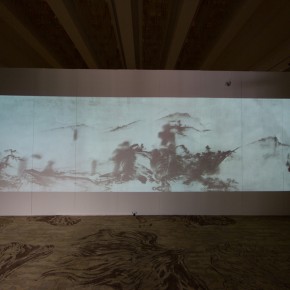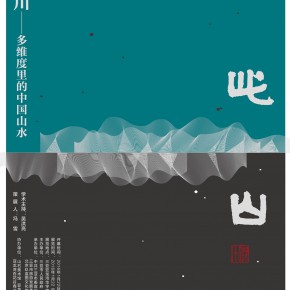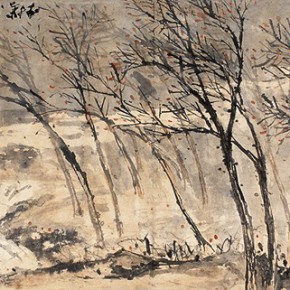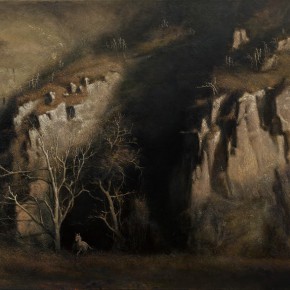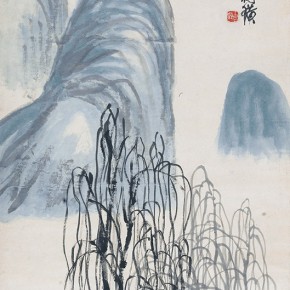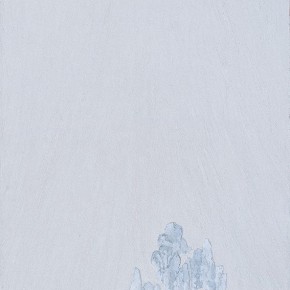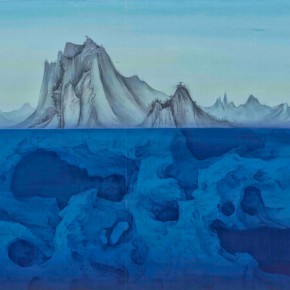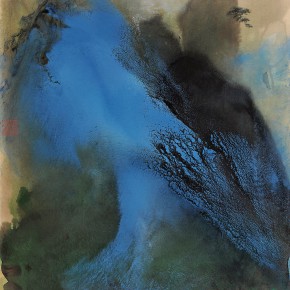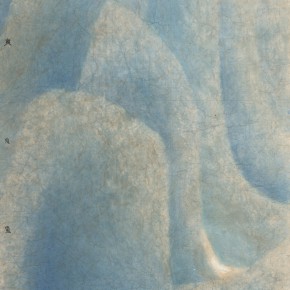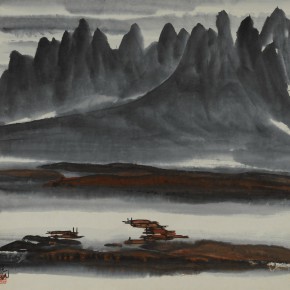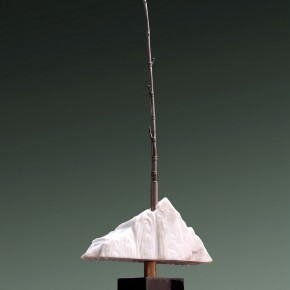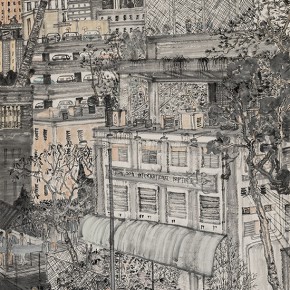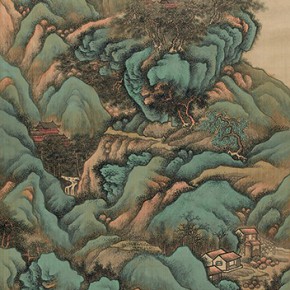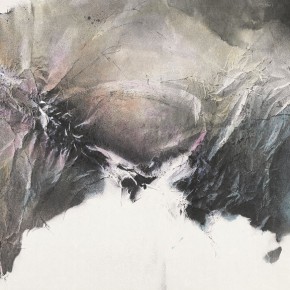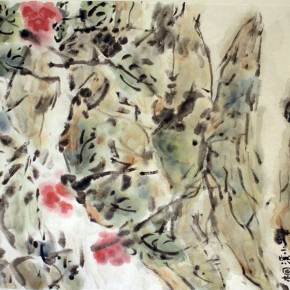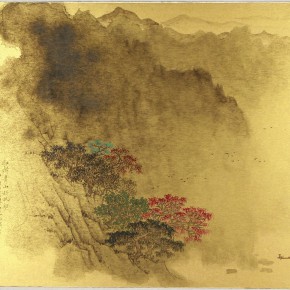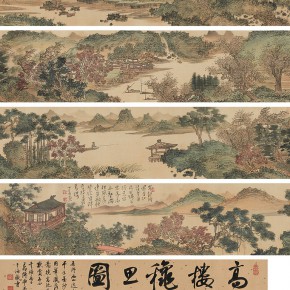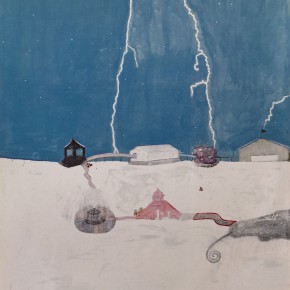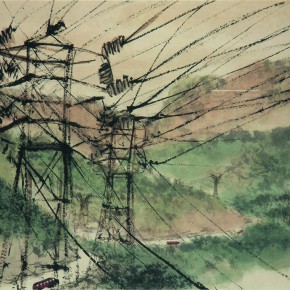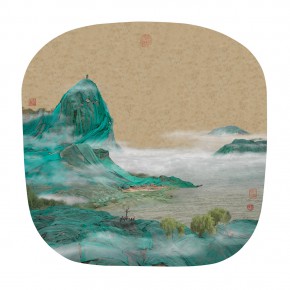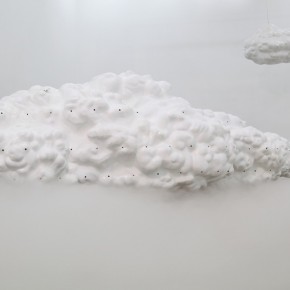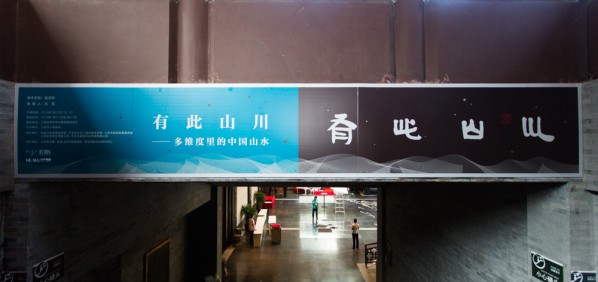
On January 22nd, 2016, with the arrival of the cold wave across the country, Huayu Hotel at Yalong Bay in distant southern China presented a warm, fresh and sincere landscape show - “Mountains and Rivers – Chinese Landscape on a Multi-Dimensional level”. The exhibition is organized by Sanya Municipal People’s Government, Director of the Art Museum of Beijing Fine Art Academy Wu Hongliang was invited to serve as the Academic Chair and a PhD at CAFA Feng Xue serves as the curator, through the presentation of the masterpieces created by well-known Chinese landscape painters in the 20th century and major contemporary artists’ art practices themed on landscape, starting from the predecessors’ desire to stick to tradition and fusion of Chinese and western culture, to present people with a global vision using the past to bring forth the current, to present the thoughts of the landscape proposition in a multiple-dimensional collision.
One of the features of the exhibition is the “contrast between the ancient and modern”, so that the show is described as a curatorial “experiment”. At the opening ceremony, the Dean of the School of Humanities, CAFA Prof. Yin Ji'nan said that: “I was worried about the show before I visited it, because the elements of the exhibited works are complex, and it is a great curatorial challenge to bring together the works of the ancient and modern society.” He said that the contemporary ink and brush of landscape was not used to carry the rare traditional literati values any more, but has become a landscape that presents the new social life. It is a form of innovation that completely place the three forms including the literati landscape, modern landscape, and post-landscape image in an exhibition space. While the most thought-provoking in the exhibition is that: the profound change of the inside of the Chinese culture is much more complicated than what the theorists have described, the exhibition helps us to pay attention to this special phenomenon, therefore it has a far-reaching significance.
Mountains and Rivers is based on the 47 pieces (volumes) of landscape painting masterpieces by the masters of the 20th Century in the collection of the Shanyou Art Museum of the Huayu Group, and the curator and the academic chair selected representative works themed on landscapes by 28 contemporary artists to map the collection. The works are divided into three thematic sections including “genre”, “stander” and “borrowing”, when the curator Feng Xue was interviewed, she told us that: in the section of “genre”, they selected the work which emphasizes the pursuit of the old artistic conception and heritage of the tradition in the brush and ink language, in interest and charm; in the section of “stander”, the audience could see that the artists had completed an “investigation of things” to combine China and the west, integrating a variety of practices and theories; in the section of “borrowing”, landscape was more like an excuse or sustenance, the artists undertook the research and thought in multiple categories, on the basis of the abundant symbolic meanings of landscape painting and its broad inclusiveness.Although it is “a dialogue between ancient and modern art practices”, rather than to simply use a binary view to classify the time and genre, the exhibition stages a rich and multi-dimensional presentation by alternately arranging the exhibition, looking for the changeless cultural gene in the marching timeline, to analyze the changing deduction and development of the artistic expressive ways under the common motif.
“Landscape” is as a sort of feeling of the ancient and modern men of letters, with an extensive coverage and referential significance. The exhibition takes “landscape” in the painting as the main body, and presents the works with a variety of forms of art media, including “landscape” of poetry, music and interactive image, etc. At the opening ceremony, the Time Knob (Lu Yuan and Zhu Linlei) brought the piano playing and the multimedia interactive visual and auditory performance to the audience that were present at the exhibition.
For the academic circles, the holding of such an exhibition links to the thought of scholars, artists and critics. Such a large scale exhibition where characters, works, time and space, geography are disorganized then brought together under the same big theme of “landscape” is attractive and difficult to complete. “Is the creation taking “landscape” as an excuse closer to the core of the spirit of Chinese landscape, or does it move towards the edge of landscape because of the diversity of forms, thoughts and methods?” Perhaps, as what is described, in the face of complex and varied practices, the change of form might be a channel to enter the spirit of landscape, but how to build on this is still a problem. We assume that the exhibition is a way of thinking, to trigger the scholars and the public discussion on the basis of the presentation.
Text by Zhu Li, Photo by Yang Yanyuan/CAFA ART INFO
Translated by Chen Peihua and edited by Sue/CAFA ART INFO


